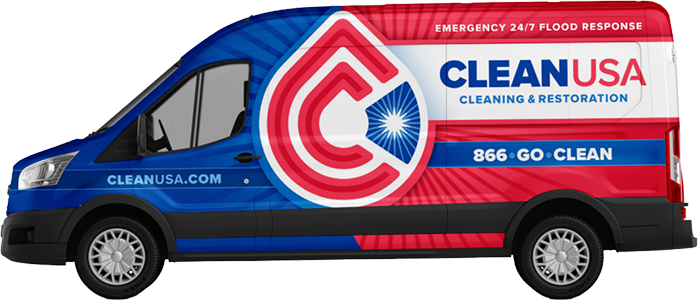Water damage refers to various losses caused by water entering a material or system and leading to destructive processes such as rotting, mold growth, rusting, and more. This type of damage can occur from burst pipes, plumbing issues, floods, and storms. However, it is different from flood damage, which is caused by a flooding event.
Water damage is categorized based on the level of contamination of the water source. There are three categories of water damage:
- Category 1 (clean water)
- Category 2 (grey water)
- Category 3 (black water)
Homeowners insurance typically covers water damage but not flood damage. In high-risk areas, separate flood insurance is necessary to ensure proper coverage.
Preventing water damage is important and can be achieved through regular inspections, knowing the location of the main water shut-off valve, and maintaining plumbing and roof. Water damage restoration should be done by professionals to prevent further damage and risks like mold growth.
Key Takeaways:
- Water damage refers to various losses caused by water and can lead to destructive processes like mold growth and rusting.
- There are three categories of water damage based on the level of contamination of the water source.
- Homeowners insurance typically covers water damage but not flood damage, requiring separate flood insurance in high-risk areas.
- To prevent water damage, regular inspections and maintenance of plumbing and roof are important.
- Water damage restoration should always be done by professionals to prevent further damage and risks like mold growth.
Types of Water Damage in Chicago
Water damage can be devastating to your property, and it comes in different types depending on the source and level of contamination. Understanding these types is crucial in determining the right restoration process.
Category 1 Water Damage
Category 1 water damage, also known as “clean water,” is the least contaminated water and comes from sources such as broken pipes, rainwater, or overflowing sinks. This water is considered safe for consumption and poses no significant risk to humans.
However, if left unaddressed, it can turn into category 2 water damage due to prolonged exposure and contamination, making it a breeding ground for mold and bacteria.
Category 2 Water Damage
This type of water damage, also known as “greywater,” is contaminated and may cause illness when ingested or exposed to the skin. It comes from sources such as washing machines, dishwashers, and toilet overflows.
Category 2 water damage requires prompt attention, as it can quickly escalate to category 3 water damage due to bacterial growth and other harmful substances.
Category 3 Water Damage
Category 3 water damage, also known as “blackwater,” is the most hazardous and contaminated type of water. It contains harmful bacteria, fungi, sewage, and other toxic substances that can cause severe illness or even death if ingested or exposed to the skin.
Category 3 water damage is typically caused by natural disasters such as floods, hurricanes, or overflowing sewage systems. Professional remediation is required to extract the contaminated water, sanitize the area, and prevent further damage to the property.
The effects of water damage range from structural deterioration, electrical hazards, and microbial growth to the loss of personal belongings and compromised indoor air quality. Common causes of water damage include burst pipes, plumbing issues, floods, and storms. Regular inspections, maintaining plumbing and roof, and knowing the location of the main water shut-off valve can prevent water damage.
Remember, while homeowners’ insurance may cover some types of water damage, it does not typically cover flood damage. Therefore, it is essential to have separate flood insurance, especially if you live in high-risk areas.
Lastly, always seek professional help for water damage restoration and repairs to prevent further damage and risks like mold growth and structural deterioration.
Signs of Water Damage
It is important to be able to identify the signs of water damage in your home to take prompt action and minimize potential damage. Look out for these common signs:
Stains and Discoloration
Water stains on ceilings and walls are a clear sign that there is a leak. Discoloration is often a sign of prolonged water exposure. Check for stains around windows, doors, and in the corners of your rooms.
Foul Smell
A persistent musty odor is a sign of mold growth and water damage. If you notice a damp or musty smell, investigate the source of the odor immediately.
Texture Changes
Changes in the texture of walls and ceilings are a sign of water damage. Swelling, sagging, and warping are common texture changes that indicate water damage.
Puddles and Water Accumulation
Standing water or puddles in your basement or on your floors is a clear sign of water damage. This is often caused by leaks, burst pipes, or sewage backups.
If you notice any of these signs, it is important to take immediate action to prevent further damage. Contact a professional water damage restoration company to assess the extent of the damage and provide proper cleanup and repairs.
Water Damage Insurance
Homeowners insurance typically covers water damage but not flood damage, so separate flood insurance is necessary in high-risk areas. Water damage refers to various losses caused by water entering a material or system and leading to destructive processes such as rotting, mold growth, rusting, and more. It can occur from burst pipes, plumbing issues, floods, and storms.
Category 1 water damage involves clean water, while Category 2 is grey water that contains some level of contaminants, and Category 3 is black water or highly contaminated water. These categories determine the level of contamination and the necessary precautions when dealing with water damage.
It is important to have sufficient water damage insurance coverage to avoid costly repairs and expenses. You must have a clear understanding of what is covered under your insurance policy when it comes to water damage and flood damage. You should also consider talking to your insurance agent to learn more about the available coverage options.
Preventing Water Damage
To prevent water damage, regular inspections, knowing the location of the main water shut-off valve, and maintaining plumbing and roof are important. Check your roof for leaks and damaged shingles regularly and immediately repair any issues. Additionally, check pipes and appliances for leaks or signs of damage, such as rust or corrosion. Fix any issues promptly and hire a professional plumber if needed.
You should also be aware of the location of the main water shut-off valve in your home so that you can turn off the water supply quickly in an emergency. It is also recommended to install a water leak detection system that can notify you of any leaks or water damage in real-time.
If you live in a flood-prone area, consider installing flood barriers or purchasing a sump pump to help prevent water damage. Keep gutters and downspouts clean and free of debris to prevent water from overflowing and damaging your property.
In case of a water damage emergency, make sure to act quickly and follow the appropriate steps for water damage cleanup. If the damage is extensive or hazardous, always hire professionals for water damage restoration and repairs.
Water Damage Restoration
Water damage restoration should be done by professionals to prevent further damage and risks like mold growth. Professionals have the knowledge, skills, and equipment to detect hidden water damage and dry all affected areas thoroughly. They also have the experience to restore damaged materials and prevent future problems like warping and cracking. Attempting water damage restoration on your own can be dangerous and ineffective, as you may not properly handle hazardous materials and may not know the right techniques to use for each type of damage.
When hiring a water damage restoration company, make sure they are licensed and certified, have good reviews and ratings, and offer a warranty for their work. They should also have a 24/7 emergency response team, as water damage can happen at any time and needs to be dealt with quickly. Once they arrive, they will assess the damage, develop a plan for restoration, remove excess water and debris, dry the area, sanitize and deodorize affected items, and replace or repair damaged materials. Check out Clean USA in the Chicago greater area and see our location and service areas.
Conclusion
Understanding what is considered water damage and taking proactive measures can help homeowners protect their property and prevent costly repairs in the long run. It is important to be aware of the signs and types of water damage, as well as the different categories of water contamination. While homeowners insurance typically covers water damage, separate flood insurance may be necessary in high-risk areas. To prevent water damage, it is essential to regularly inspect plumbing and roof, as well as know the location of the main water shut-off valve. If you do experience water damage, it is critical to hire professionals for water damage restoration to prevent further damage and risks like mold growth. By being vigilant and taking preventative measures, you can help safeguard your property against the damaging effects of water.
FAQ
Q: What is considered water damage?
A: Water damage refers to various losses caused by water entering a material or system and leading to destructive processes such as rotting, mold growth, rusting, and more. It can occur from burst pipes, plumbing issues, floods, and storms.
Q: What are the different types of water damage?
A: There are three categories of water damage based on the level of contamination: Category 1 (clean water), Category 2 (grey water), and Category 3 (black water).
Q: How can I identify signs of water damage?
A: Common signs of water damage include water stains, musty odors, warped or discolored surfaces, peeling paint or wallpaper, and visible mold growth.
Q: Does homeowners insurance cover water damage?
A: Yes, homeowners insurance typically covers water damage. However, flood damage, which is caused by a flooding event, is not covered. Separate flood insurance is necessary in high-risk areas.
Q: What can I do to prevent water damage in my home?
A: Regular inspections, knowing the location of the main water shut-off valve, and maintaining the plumbing and roof are important measures to prevent water damage.
Q: Why is it important to hire professionals for water damage restoration?
A: Professionals should handle water damage restoration to prevent further damage and risks like mold growth. They have the expertise and equipment to effectively restore your property.




